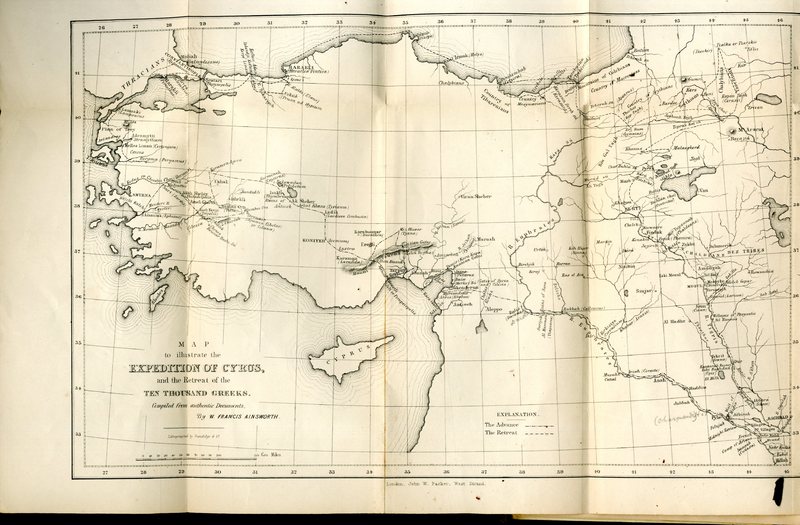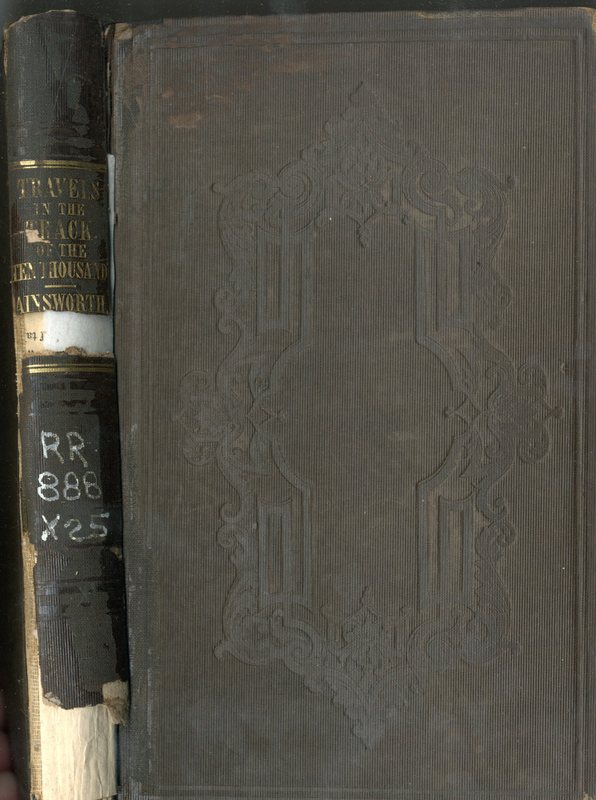This volume by English surgeon, traveller, geographer and geologist, William Francis Ainsworth, is a geographical and descriptive account of the expedition of Cyrus the Great and of the retreat of his Greek mercenaries after the death of the Persian prince.
William Francis Ainsworth (1807–1896) was an English surgeon, traveller, geographer and geologist, known also as a writer and editor. In 1836 Ainsworth, after studying under Sir Edward Sabine, was appointed surgeon and geologist to the expedition to the River Euphrates under Francis Rawdon Chesney. Shortly afterwards he was placed in charge of an expedition to the Christians of Chaldaea, which was sent out by the Royal Geographical Society and the Society for Promoting Christian Knowledge. He went to Mesopotamia, through Asia Minor, the passes of the Taurus Mountains, and northern Syria, reaching Mosul in the spring of 1840. During the summer he explored the Kurdistan mountains and visited Lake Urimiyeh in Persia, returning through Greater Armenia; and reached Constantinople late in 1840. This expedition had financial troubles, and Ainsworth had to find his way home at his own expense.On his return from the Euphrates expedition he published his observations under the title of 'Researches in Assyria, Babylonia, and Chaldsea.' In 1842, he published an account of the Mesopotamia expedition entitled 'Travels and Researches in Asia Minor, Mesopotamia, Chaldsea, and Armenia,' London, 2 vols. Two years later, in 1844, he produced his major work, the 'Travels in the Track of the Ten Thousand Greeks,' a geographical and descriptive account of the expedition of Cyrus the Great and of the retreat of his Greek mercenaries after the death of the Persian prince.
http://en.wikipedia.org/wiki/William_Francis_Ainsworth


